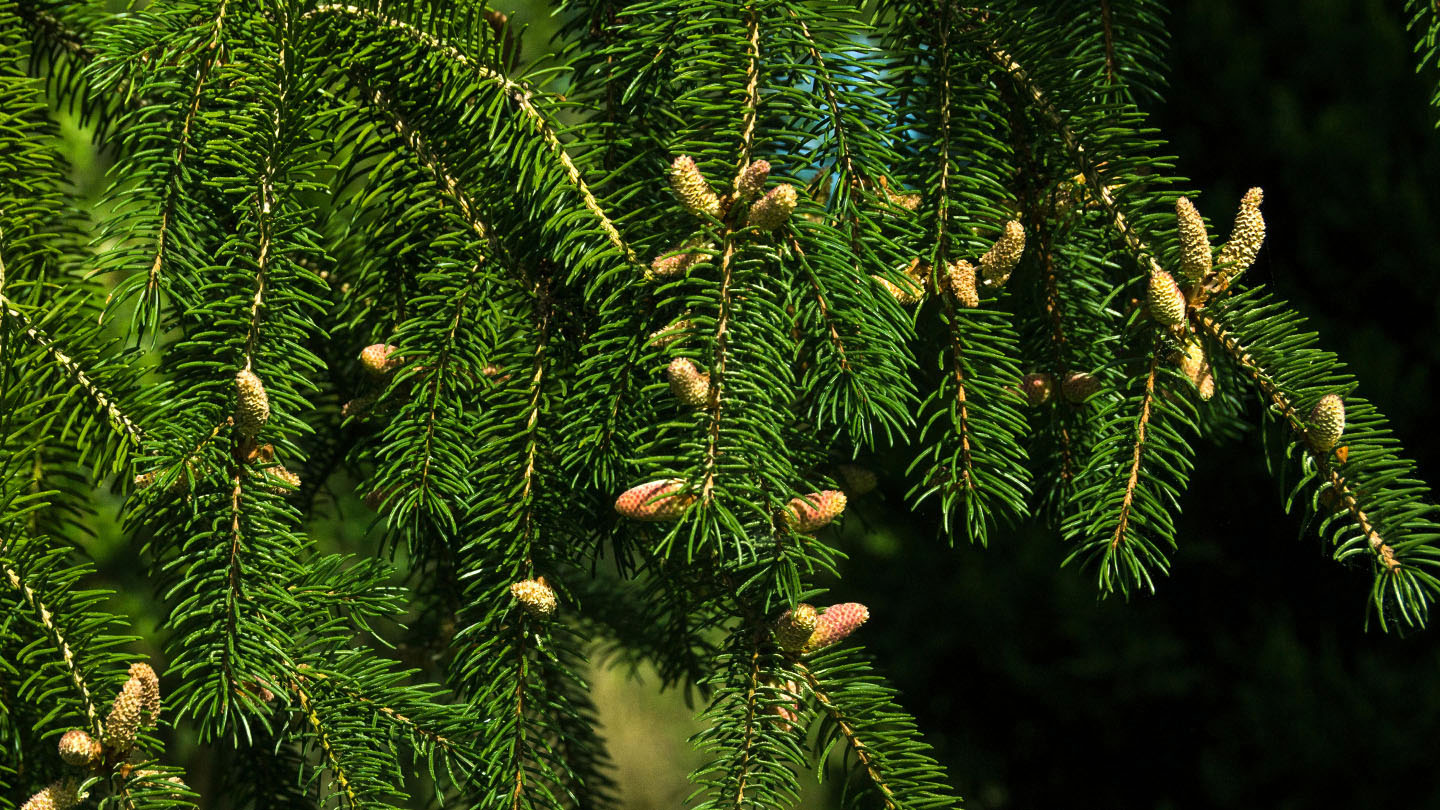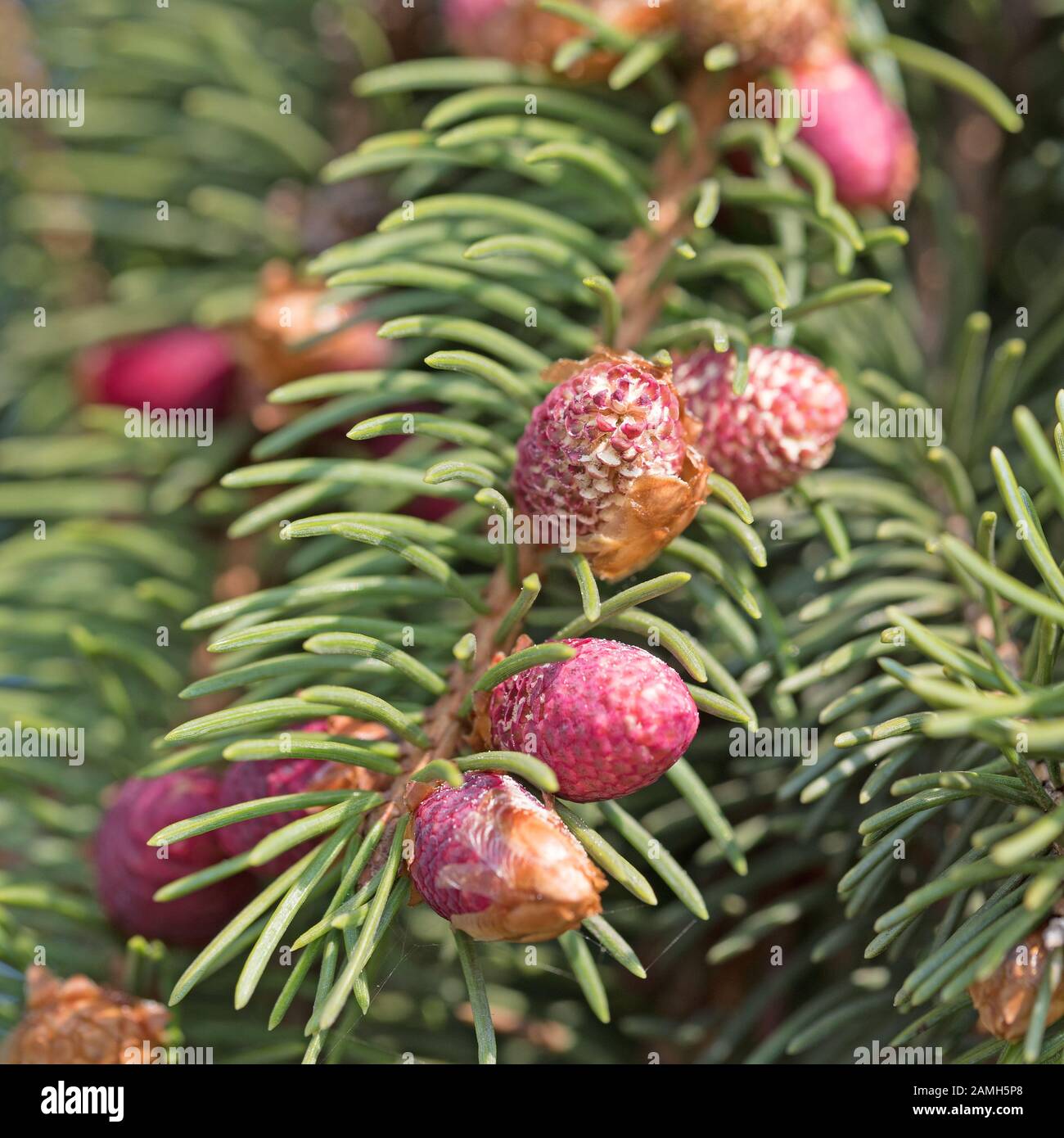“`html
The Enchanting Bloom of the Flowering Spruce Tree
The Enchanting Bloom of the Flowering Spruce Tree
Spruce trees, those stalwart evergreens that paint our landscapes with shades of deep green, are often admired for their stoic presence and year-round beauty. While their iconic needle-like foliage and pyramidal form are well-known, the flowering aspect of spruce trees often remains shrouded in mystery. Many people are surprised to learn that these conifers do indeed bloom, producing delicate, albeit inconspicuous, flowers that play a crucial role in their reproductive cycle. This article delves into the fascinating world of flowering spruce trees, exploring their botanical characteristics, the intricacies of their blooming process, and the ecological significance of their flowers.
Understanding Spruce Trees: A Botanical Overview
Spruce trees belong to the genus Picea within the pine family (Pinaceae). They are characterized by their needle-like leaves, which are arranged spirally around the branches. These needles are typically four-sided and attached to the twig by peg-like structures called sterigmata. Spruce trees are found primarily in the cooler temperate and boreal regions of the Northern Hemisphere, where they form vast forests and play a vital role in the ecosystem.

Several species of spruce exist, each with its own unique characteristics. Some of the most common include:
Norway Spruce (Picea abies):
Known for its rapid growth and large size, the Norway spruce is widely cultivated for timber and ornamental purposes. It is characterized by its drooping branches and large cones.
Blue Spruce (Picea pungens):

Prized for its striking blue-gray foliage, the blue spruce is a popular ornamental tree. It is native to the Rocky Mountains and is known for its stiff, sharp needles.
White Spruce (Picea glauca):
A hardy and adaptable species, the white spruce is found throughout North America and is an important component of boreal forests. It is characterized by its bluish-green needles and slender cones.
Engelmann Spruce (Picea engelmannii):
Found in the mountainous regions of western North America, the Engelmann spruce is known for its high-altitude tolerance and soft, bluish-green needles.
The Hidden Bloom: Spruce Tree Flowers
Unlike the showy flowers of deciduous trees, spruce flowers are small and inconspicuous, often going unnoticed. They are unisexual, meaning that male and female flowers are produced separately on the same tree (monoecious). This separation helps to prevent self-pollination and promotes genetic diversity.
Male Flowers (Pollen Cones):
Male flowers, also known as pollen cones, are typically located on the lower branches of the tree. They are small, cylindrical structures that are usually reddish or yellowish in color. They consist of numerous microsporophylls, which are specialized leaves that bear pollen sacs (microsporangia). When mature, the pollen sacs release copious amounts of pollen, which is carried by the wind to female flowers.
Female Flowers (Seed Cones):
Female flowers, or seed cones, are typically located on the upper branches of the tree. They are small, cone-like structures that are usually greenish or purplish in color. They consist of numerous ovuliferous scales, which are specialized leaves that bear ovules. After pollination, the ovules develop into seeds, and the cone matures.
The Blooming Process: A Seasonal Symphony
The timing of spruce tree flowering varies depending on the species, climate, and elevation. In general, flowering occurs in the spring, shortly after the new growth emerges. The process can be broken down into several stages:
Bud Development:
Flower buds begin to develop during the previous growing season. They remain dormant over the winter and resume growth in the spring as temperatures rise.
Flower Emergence:
As the buds swell, the male and female flowers emerge. Male flowers release pollen, while female flowers become receptive to pollen.
Pollination:
Wind is the primary agent of pollination in spruce trees. The lightweight pollen grains are carried by air currents and dispersed throughout the forest. Some pollen grains land on the receptive female flowers, initiating fertilization.
Fertilization and Cone Development:
After pollination, fertilization occurs, and the ovules begin to develop into seeds. The female cone grows and matures over several months, eventually turning brown and woody.
Seed Dispersal:
Mature cones release their seeds, which are dispersed by wind or animals. The seeds germinate under favorable conditions, giving rise to new spruce trees.
Ecological Significance of Spruce Flowers
Although they may seem insignificant, spruce flowers play a vital role in the ecosystem. They are an essential part of the spruce tree’s reproductive cycle, ensuring the continuation of the species. Additionally, they provide food and habitat for various insects and other animals.
Pollen as a Food Source:
Spruce pollen is a rich source of protein and other nutrients, making it an important food source for various insects, including bees, flies, and beetles. These insects, in turn, serve as food for other animals, contributing to the overall biodiversity of the forest.
Cone Habitat:
Mature spruce cones provide shelter and nesting sites for various birds and small mammals. Some species, such as squirrels and crossbills, are specialized to feed on spruce seeds.
Forest Regeneration:
The seeds produced by spruce flowers are essential for forest regeneration. After disturbances such as fire or windstorms, spruce trees can re-establish themselves from seeds, contributing to the recovery of the ecosystem.
Factors Affecting Spruce Flowering
Several factors can influence the flowering of spruce trees, including:
Climate:
Temperature, precipitation, and sunlight play a crucial role in the timing and intensity of flowering. Warm temperatures and adequate moisture promote flower development, while extreme weather conditions can inhibit flowering.
Age and Health:
Mature, healthy spruce trees are more likely to produce flowers than young or stressed trees. Stress factors such as drought, nutrient deficiencies, or insect infestations can reduce flowering.
Genetics:
Different spruce species and even individual trees within a species may have varying flowering tendencies due to genetic differences.
Environmental Stress:
Pollution and other environmental stress may impact the reproductive health of the spruce tree and reduce the production of flowers.
Observing Spruce Flowers: A Guide for Nature Enthusiasts
While spruce flowers may be small and inconspicuous, they can be a fascinating sight for nature enthusiasts. Here are some tips for observing spruce flowers:
Timing:
The best time to observe spruce flowers is in the spring, shortly after the new growth emerges. Look for male flowers on the lower branches and female flowers on the upper branches.
Location:
Spruce trees are found in various habitats, including forests, mountains, and parks. Choose a location with a healthy population of spruce trees.
Tools:
A pair of binoculars or a magnifying glass can help you observe the small details of spruce flowers. A camera can also be useful for documenting your observations.
Patience:
Spruce flowers can be difficult to spot, so be patient and take your time. Look carefully at the branches and twigs for small, colorful structures.
Conclusion: The Silent Beauty of Spruce Blooms
The flowering of spruce trees is a subtle yet essential aspect of their life cycle. These inconspicuous blooms, often overlooked by casual observers, play a crucial role in the reproduction and ecological significance of these majestic evergreens. By understanding the intricacies of spruce flowering, we gain a deeper appreciation for the complexity and beauty of the natural world. So, the next time you find yourself in a spruce forest, take a moment to look closely and appreciate the hidden beauty of these remarkable trees.
“`



